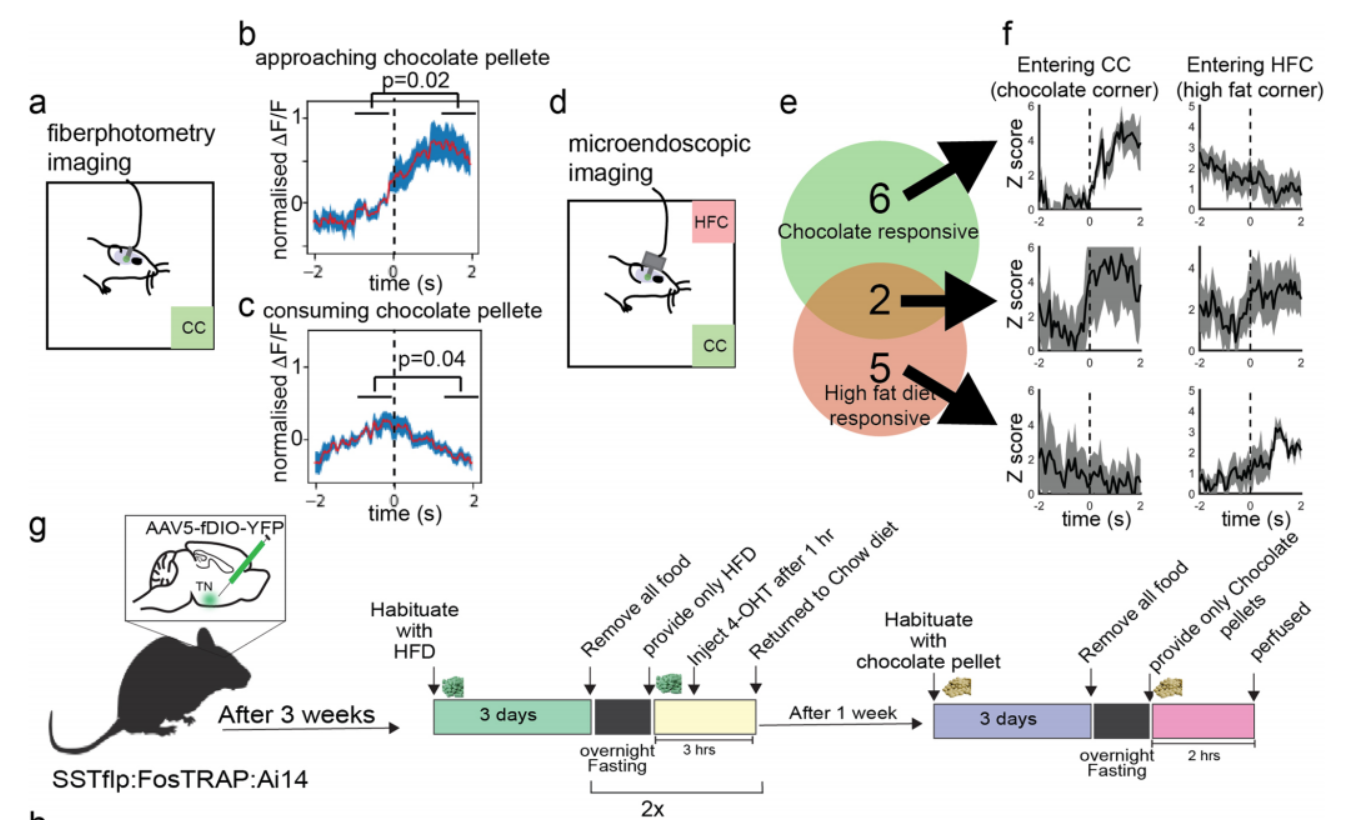AAV9-GCaMP6m was used for fiberphotometry imaging. (From
BrainVTA)
The viruses used in this article are in the table below
|
Calcium sensors |
PT-0283 AAV9-EF1a-DIO-GCaMP6m |
Hasan Mohammad, Esra Senol, Martin Graf , Chun-Yao Lee, Qin Li, Qing Liu, Xin Yi Yeo, Menghan Wang, Achilleas Laskaratos, Fuqiang Xu, Sarah Xinwei Luo, Sangyong Jung, George J Augustine, Yu Fu
Pub Date: 2021-06-24,
DOI: 10.1038/s41593-021-00875-9,
Email: sales@brainvta.com
Despite notable genetic influences, obesity mainly results from the overconsumption of food, which arises from the interplay of physiological, cognitive and environmental factors. In patients with obesity, eating is determined more by external cues than by internal physiological needs. However, how environmental context drives non-homeostatic feeding is elusive. Here, we identify a population of somatostatin (TNSST) neurons in the mouse hypothalamic tuberal nucleus that are preferentially activated by palatable food. Activation of TNSST neurons enabled a context to drive non-homeostatic feeding in sated mice and required inputs from the subiculum. Pairing a context with palatable food greatly potentiated synaptic transmission between the subiculum and TNSST neurons and drove non-homeostatic feeding that could be selectively suppressed by inhibiting TNSST neurons or the subiculum but not other major orexigenic neurons. These results reveal how palatable food, through a specific hypothalamic circuit, empowers environmental context to drive non-homeostatic feeding.
 Figure 1. Further characterisation of tNSSt neuronal response to palatable diets.
Figure 1. Further characterisation of tNSSt neuronal response to palatable diets.
In this study, the data reveals how palatable food, through a plastic hypothalamic neural circuit, enables an environmental context to drive non-homeostatic feeding.
BrainVTA offers viral vector construction & virus packaging services for AAV, LV, RABV, PRV, HSV and VSV that help researchers explore questions about genes, neurons, circuitry structure, function of brain network, mechanism and treatment of diseases.
If you have any needs, just email us at
sales@brainvta.com.
